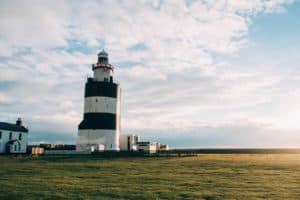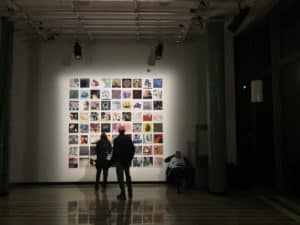Mauritania: The Arab Country the World Seems to Have Forgotten (And 6 Stunning Attractions)
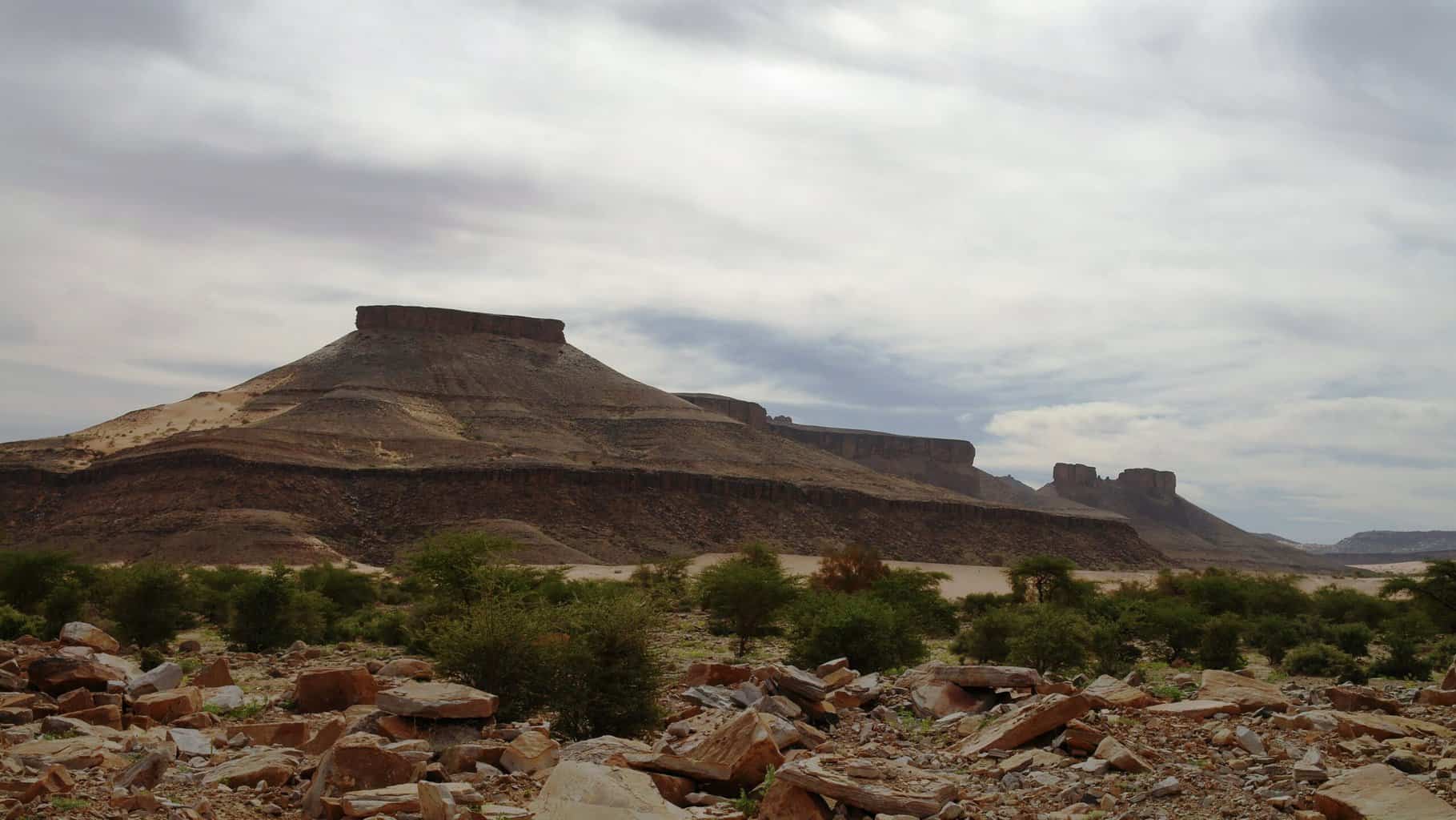
Updated On: April 20, 2024 by Noha Basiouny
Nowadays, and with the level of openness, connection, and the ability to learn about anything in the world in mere seconds that we have at our fingertips, we must know a thing or two about almost every corner of the globe.
Many countries are popular for their great history, rich cultures, and vibrant attractions. Some jumped to global awareness because of the stunning development they managed to make in the last few decades—you surely know which country I am talking about here, do you not? Other countries are known for the system they are run with, or how isolated from or open to the rest of the world, they are.
Theoretically speaking, that should be correct. Yet, if you take a minute to head to Google Earth, rotate the globe, stop at the Pacific Ocean, and zoom in, can you see how many tiny islands are drifting on the vast blueness of the ocean without almost anyone ever hearing of them? Have you ever heard of Coco Islands, for instance? It is a real country!
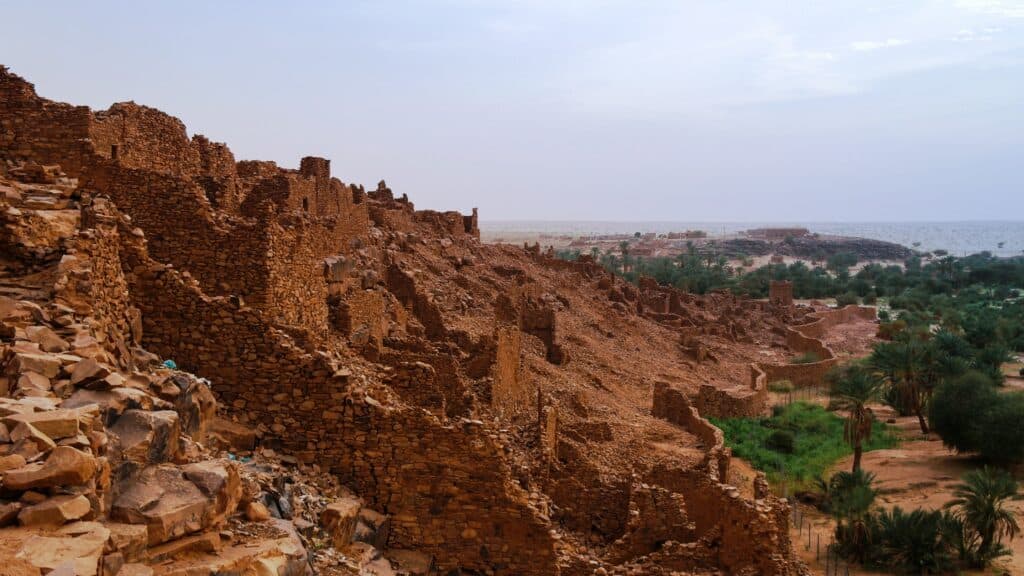
So many countries stay anonymous due to their remote location and separation from landmasses, incredibly small size and population, or the little contribution they make to global development. But what about those countries with super large areas, big populations, great history, relatively reachable locations and well-known neighbours? How could they slip into oblivion without anyone even noticing that or doing anything to reverse it?
Is it, not a big loss that we do not know about these countries? Could you imagine what amazing influence we might be missing out on only because the media decided to turn a blind eye to them?
Well, we at ConnollyCove, decided otherwise. In this article, we will explore such unique yet sadly long-forgotten countries. We are taking you to Mauritania.
So bring a large cup of coffee, and let’s hop into it.
What Exactly is Mauritania?
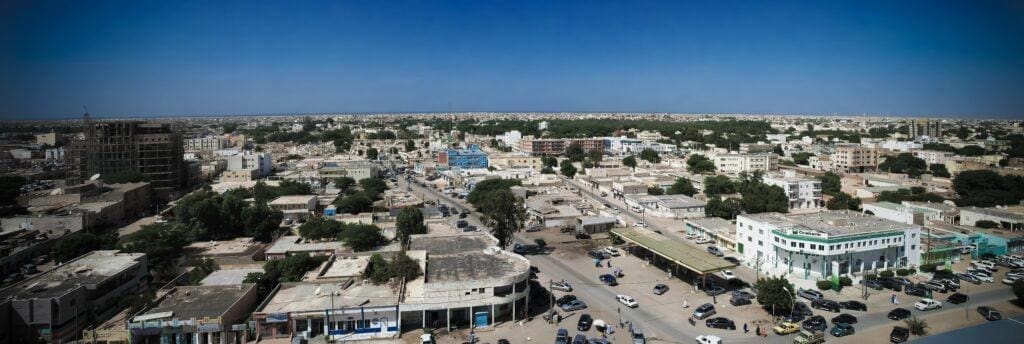
One thing that many, especially young Arabs, might be surprised to know is that Mauritania is an Arab and Muslim country! But thanks to no one ever bringing this up, let alone history books dedicating enough lessons to demonstrate some facts about it, no one seems to have ever heard of this country.
Mauritania is a large coastal country situated in the northwest of Africa and bordered by the Western Sahara Desert to the north, which separates it from Morocco. The country is surrounded by the Atlantic Ocean to the west as well as Algeria, Mali, and Senegal, which is also a Muslim country but not an Arab one.
Compared to Egypt, whose area is 1.002 million square kilometres, Mauritania is slightly bigger, with an area of 1.031 million square kilometres. While Algeria and the Democratic Republic of Congo are the largest two countries in Africa, Mauritania ranks #11.
Nouakchott is the capital of and, by far, the largest city in Mauritania. It is 1,000 square kilometres in area and is in the west of the country, precisely on the Atlantic Coast. As a great economic and cultural hub, Nouakchott is where the country’s most notable universities, biggest businesses and wonderful attractions are found. That is why around 1.2 million of the 4.6 million people living in all of Mauritania are concentrated there as they can find better life and work conditions.
As of 2021, Mauritania has a population of only 4.615 million people. This lists it among the least populated countries in the world today. Compared to its large area, the density is just as low as five people per square kilometre! One reason for that is undoubtedly the large desert composition of the country.
Well, that is correct. Thanks to the fact that it is almost entirely situated in the Sahara Desert, most of Mauritania is, yes, made of desert. However, this has given it a unique geology made of super high content of granite, limestone, iron, gold and copper. In addition, Mauritania has proven oil reserves that hold around 20 million barrels per year; however, that does not make it a major oil exporter.
Economy
Aside from that, Mauritania does have more potential to export natural gas thanks to the 2014 remarkable discovery of natural gas deposits off its coastal border with Senegal. What is even more terrific is that this reserve is estimated to hold around 1.4 trillion cubic metres of gas.
Soon after this discovery, the Mauritanian government started building the Greater Tortue Ahmeyim gas field. It is located 120 kilometres off the coast of Mauritania and just as deep as 2850 metres underwater. This makes it Africa‘s deepest gas field ever built so far.
The project saw significant progress during the following years, yet, it was slowed down because of the quarantine. As things went back to normal, and as of September 2022, around 80% of the work has been completed.
Upon completion, which is due in 2023, the field is expected to produce 2.5 million cubic metric tonnes of gas a year. During this time of conflict between Ukraine and Russia, the world’s biggest exporter of natural gas the entire continent of Europe has been depending on for years, this newly discovered gas reserve in Mauritania promises a more accessible and consistent supply of natural gas as well as an incredible transformation of Mauritania’s economy in the very near future.
This is exactly like when a desperate Hollywood producer finally finds his very talented young actor who is going to make him many, many top box office films and take him to the highest-grossing producers’ category!
In the meantime, the Mauritanian economy is mostly dependent on fishing since it is a coastal country. It produces a wide variety of fish, including tuna, shrimp, and sardines, every year. Mining is also a major source of national income, which, as we mentioned, will take the economy to a brand-new level quite soon. In addition, agriculture is also a thing in Mauritania, primarily enabled by the rivers flowing through it, the most significant of which is the Senegal River.
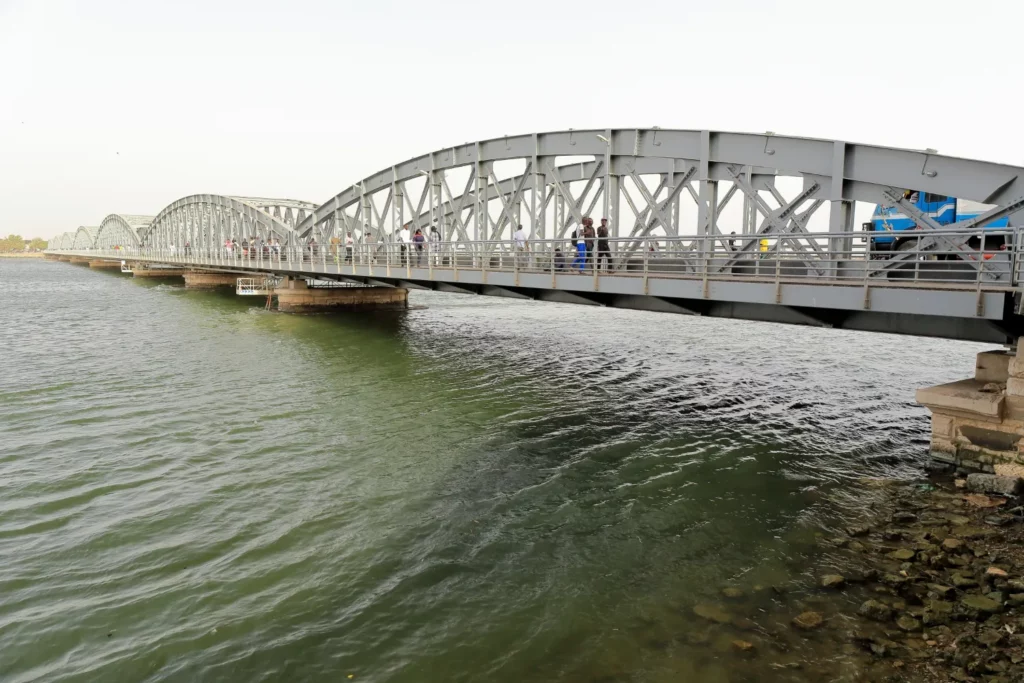
History
Mauritania, as a republic, only came into existence in 1960. Before that, precisely from 1895 to 1960, the country was occupied by France, which was also occupying Morocco, Algeria, and Tunisia at the time. Together, all these countries were named French West Africa.
But after World War II ended, most colonised countries in Africa started fighting for and gaining independence one after the other. Mauritania started a new era of freedom and self-ruling in 1960. In late October 1961, it became a member of the United Nations and joined the Arab League in November 1973.
That ridiculously briefs Mauritania’s last century and a half. What about the periods before that, then? What was this country like, say, a millennium or even a few millennia ago?
Well, the Muslim conquest of North Africa took place in the mid-seventh century, as a result of which the entire region was introduced and eventually converted to Islam. Before that, North Africa, excluding Egypt, was inhabited by the Berbers, whose origin goes as far back as 10000 years. As they settled in the region, they established a great culture and rich heritage.
During the 7th century, Mauritania, along with Morocco and Algeria, were ruled by a Berber dynasty called Almoravid. When this dynasty converted to Islam, they introduced a new religion to these countries. By the 8th century, Mauritania has officially become a Muslim country.
Several other Berber dynasties ruled the country in the following centuries until the country eventually fell into the hands of the French. After over 60 years of occupation, the Muslim Republic of Mauritania was announced.
Thanks to their long rule of the country, the Berbers have left a great legacy not only in Mauritania but also in the entire region of North Africa, except for Egypt. Now, minor Berber communities are living in parts of Mauritania, Morocco, Algeria, Tunisia and Libya. Speaking of Mauritania alone, they make up around 30% of the population.
Besides the Berbers, Mauritania is also home to many other ethnic groups. These primarily include the white Moors who are of Arab-Berber origins, sub-Saharan Africans, and black Moors who are mixed between white Moors and sub-Saharans.
Languages
The official language of Mauritania is, for sure, Arabic, with Hassaniya Arabic being the country’s dialect. If you have a background in Arab countries, you must know that Arabic, well, Fusha Arabic, is the official language in all of them. However, each country has developed its very own dialect. The most common and easily understood Arabic dialect is the Egyptian one.
However, this Hassaniya Arabic, like the Moroccan, Algerian, and Tunisian dialects, might not be understood by the rest of the Arab countries, for it may have been influenced by the Berbers’ old languages.
That aside, several other languages are spoken in Mauritania by its many ethnic groups, such as Soninke, Wolof, and Fulani. French is also spoken in the country thanks to the long-lasting occupation.
Attractions
Thanks to the country’s rich Berber heritage and history, many great attractions reflect the development of the Berber dynasties that ruled the country over thousands of years. In 1989 and 1996, UNESCO listed two of these attractions as World Heritage Sites.
So let’s explore some other beautiful attractions in the country.
1. The Grand Mosque of Nouakchott
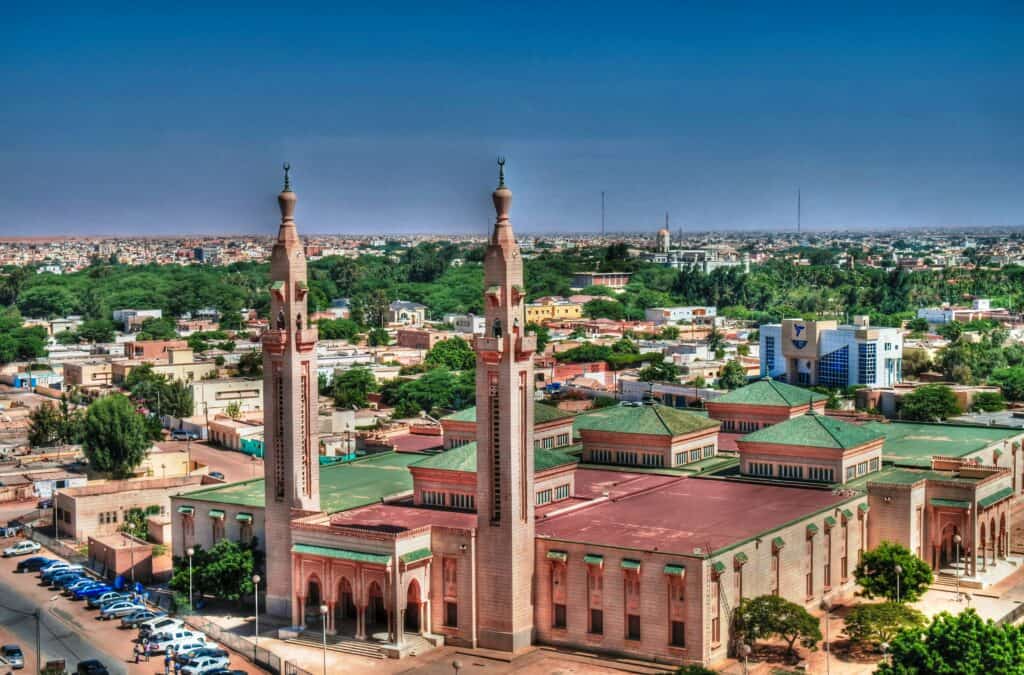
The Grand Mosque of Nouakchott is by far the largest mosque in Mauritania, given that it was built on an area of a hundred thousand square metres. With its two tall minarets standing near the entrance, this mosque is a remarkable symbol of Islamic architecture.
Located in the historic part of the city known as Medina, the construction of the Grand Mosque took about six years during the 1970s. It was made so big to take in up to 20,000 people, and there is also a museum, a school for teaching Islamic studies, and a library attached to it. The mosque is surrounded by many other historic buildings, most of which, in themselves, are beautiful tourist attractions as well.
2. Banc d’Arguin National Park
This is Mauritania’s first UNESCO World Heritage Site, which was announced in 1989.
Stretching over the coast of the Atlantic Ocean and covering an area of 12,000 square kilometres, the Banc d’Arguin National Park is a great tourist attraction one should not miss when visiting the country. What makes it so special is its great ecosystem that combines both marine life and desert life.
More precisely, the park comprises sand dunes, islands, lagoons and mudflats, as well as large areas of marshes overgrown by grass. The latter is the habitat of the nesting birds of Western Africa, with a population of up to 40,000 pairs of 15 various species.
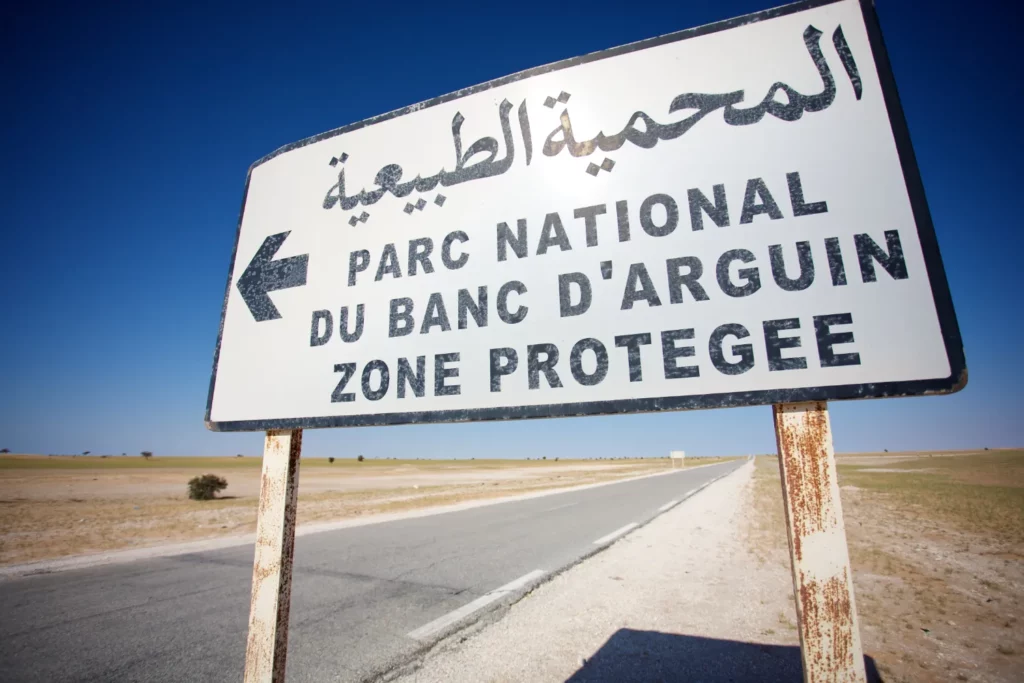
The marshes are also home to over two million migratory birds that leave the freezing-cold winter of their original habitat in northern Europe, Greenland and Siberia and come to enjoy three months of warmth and food abundance in this place.
In addition to those birds, the Banc d’Arguin National Park is also home to pelicans and flamingos. At the same time, its shallow waters host around 50 different fish species, turtles and dolphins.
The park was constructed in 1976 to protect the rich and precious natural wildlife. It makes a perfect destination for tourists who want to go hiking, camping and bird-watching, which are all great winter activities. Guided tours are available at the park.
3. National Museum of Mauritania
Another famous tourist attraction that one should not miss when in the country is the National Museum of Mauritania.
Located in Nouakchott, the museum is quite large and has two storeys. It displays excellent collections from the heritage and history of the country, including pottery, jewellery, clothing, sculptures, statues, and musical instruments. The exhibits tell the story of the country, almost from the stone age to the present time, and show how the people of the past lived and interacted with one another.
There are three exhibition rooms in this museum, two of which are permanent, where the collections are always the same and available for display all the time. The third room, however, is a temporary exhibition. That means the displayed collections change on a regular basis.
The National Museum of Mauritania also comprises the Mauritanian Manuscripts Conservation Centre, the Mauritanian Institute of Scientific Research, and the National Library of Mauritania. The latter contains over 10,000 volumes and has seven branches located in different cities.
These, along with the museum, make a fantastic tourist attraction, a perfect place to learn about the country in terms of its great culture, history and heritage.
4. Ancient Ksour of Ouadane, Chinguetti, Tichitt and Oualata
The second UNESCO World Heritage Site in Mauritania is basically four ancient towns that were established sometime in the 11th century. Back in the day, these four towns were transit zones for the trans-Saharan trade caravans that gradually turned the towns into great commercial, economic and cultural hubs. That is why they are themed by Saharan culture.
All four towns are located in the desert yet are far from one another. And despite their common Saharan themes, each one is quite distinct from the rest.
The best preserved one happens to be Ouadane, which is further to the north of the country. Chinguetti has a library containing precious manuscripts dating back to the 11th century and showing the writing systems the Berbers used in the trade back then. Tichitt is characterised by its salt mines, and Oualata has beautiful colourful houses.
5. Plage de Nouakchott
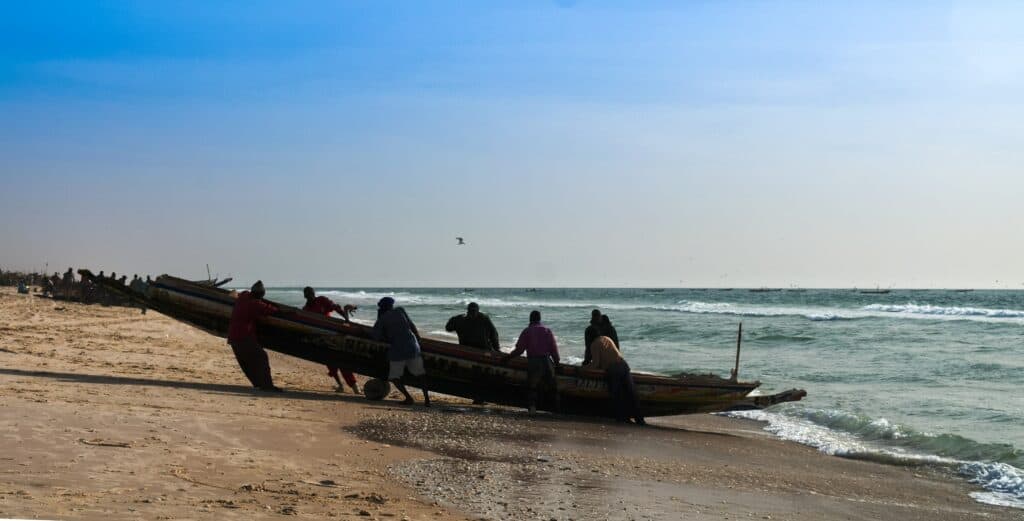
As a coastal country, Mauritania is home to many beautiful beaches; one of the most famous ones is that of the capital city known as Plage de Nouakchott. It might be far from the city centre, but it is definitely worth visiting.
The Plage de Nouakchott is a perfect spot for a relaxing vacation and leisure. There, one can enjoy swimming, walking or cycling on the beach during the day and stargazing at night.
6. Marche Capitale
In other words, this is the grand market of Nouakchott.
The Marche Capitale is located in the heart of the city. It contains different sections, with each selling different kinds of products, ranging from electronics, home tools and appliances, and food in terms of vegetables, fruit, bread, spices, fish, meat, and poultry, to accessories, shoes, traditional clothing, souvenirs, and many other different things.
This market is open and busy, 24/7. Although it might get a bit chaotic there, the Marche Capitale makes a fantastic place to learn more about Mauritanians and their culture and see the country from different perspectives. It is vivid, vibrant and definitely worth visiting.
Although it has lived in the shadows for so long, Mauritania is yet a wonderful country rich in culture, heritage, and history, and with the opening of the new gas reserve, it is expected to change skin entirely in just a matter of decades. It is an ideal spot to enjoy an excellent and affordable vacation and wander between the different attractions, from historic mosques and museums to beaches and national parks.





